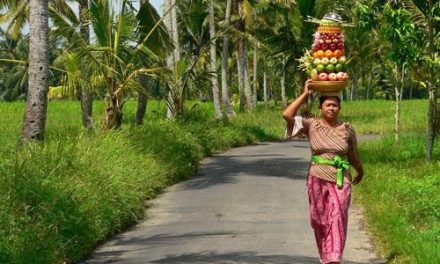Ah, Bali. The mere mention of this Indonesian gem conjures up images of lush rice terraces, serene beaches, and vibrant culture. It’s a backpacker’s dream, but timing your visit can be crucial to maximizing your adventure. So, what is the best time to go backpacking in Bali? Let’s delve into the nuances of this beautiful island and help you plan an unforgettable trip!
Understanding Bali’s Seasons
Bali has a tropical climate, which is characterized by two main seasons: the dry season and the rainy season. The dry season runs typically from April to October, while the rainy season lasts from November to March. Each season has its unique charms, making it essential to choose wisely based on your preferences.
The Dry Season: April to October
When I backpacked through Bali during the dry season, I was greeted with sunny skies nearly every day. Picture this: I was lounging on the beaches of Seminyak, sipping a fresh coconut, and soaking up the sun without a single drop of rain to spoil the mood. This is peak season for tourists, so you can expect more crowds, especially in popular spots like Ubud and Kuta.
Pros:
– Ideal Weather: The sunshine makes outdoor activities such as hiking, surfing, and island-hopping delightful. Mount Batur’s sunrise trek, for instance, is a must-do. Trust me, watching the sunrise from the summit after a moderate hike is an experience you’ll cherish forever!
– Festivals and Events: The dry season also sees a flurry of festivals. If you’re around in June, catch the Bali Arts Festival—it’s a whirlwind of color, culture, and creativity that’s not to be missed!
Cons:
– Crowds: While the vibrant atmosphere can be exhilarating, it also means more people vying for space on the beaches and at popular attractions. Don’t be surprised if you have to share your sunset view at Uluwatu Temple!
The Rainy Season: November to March
Now, I know what you might be thinking: “Why would I want to go when it’s raining?” Trust me, I’ve been there. I once landed in January, right in the heart of the rainy season. But here’s the secret: Bali experiences short bursts of rain, often in the evening, and this season can actually be quite magical.
Pros:
– Fewer Tourists: With fewer crowds comes a more authentic experience. Wandering the quiet streets of Ubud, browsing through art markets, and finding hidden gems becomes a much smoother experience.
– Cheaper Accommodation: This is the best time for budget-savvy travelers. I scored an amazing deal on a cozy guesthouse, which felt like a luxury getaway for a backpacker’s budget.
Cons:
– Inconsistent Weather: Rain can sometimes disrupt your plans. One day, I was all set to visit Tirta Empul for a refreshing holy spring water bath, but a sudden downpour meant I had to make a spontaneous detour to a local café. This led to an unexpected afternoon of chatting with locals and sharing stories over steaming bowls of Nasi Goreng—definitely not a wasted day!
What Season is Right for You?
Deciding between dry and rainy season can come down to what you want out of your Bali experience.
– For Adventure Seekers: If trekking, surfing, and exploring are high on your priority list, aim for the dry season. The trails are clear, and the beaches are perfect for catching those waves!
– For Cultural Enthusiasts: If you’re seeking a deeper connection to Balinese culture, consider going during the rainy season. Many traditional events take place, and the lush landscapes make for stunning backdrops.
Practical Tips for Backpacking Bali
1. Pack Smart: If you’re venturing out in the rainy season, bring a lightweight rain jacket and quick-dry clothes. I learned this the hard way when I got drenched in my denim shorts!
2. Book Accommodation Wisely: Booking ahead during the dry season can save you from being left without a place to sleep. Check for options on platforms like Hostelworld or Booking.com for the best budget-friendly stays.
3. Be Flexible: Bali is full of surprises. If it rains, embrace it! Spend some time in a café, chat with locals, or take a cooking class. Some of my best travel stories came from unplanned adventures.
4. Stay Hydrated: Whether it’s sunny or rainy, Bali’s heat can catch you off guard. Drink plenty of water, especially if you’re hiking or spending long days exploring temples.
Conclusion
The best time to go backpacking in Bali truly depends on what kind of experience you’re after. Each season brings its unique vibe, allowing you to tailor your trip to your preferences. Whether basking in the sun or embracing the peaceful rain, Bali has something for every backpacker. So pack your bags, choose your season wisely, and get ready for an adventure that will leave you with memories to last a lifetime! Safe travels!






